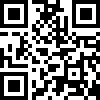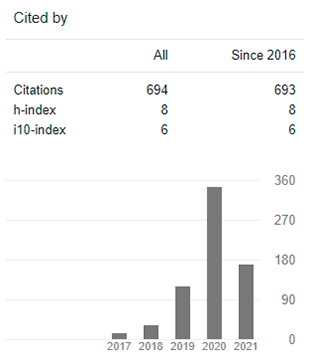Strengthening spatial-geometric thinking through multiple intelligences in early childhood education
DOI:
https://doi.org/10.29394/Scientific.issn.2542-2987.2020.5.17.4.79-99Keywords:
thinking, intelligence, mathematics, geometry, educationAbstract
This action research was based on the purpose of strengthening spatial-geometric thinking through multiple intelligences, in early childhood students, at the Miguel Antonio Caro IED school, in Bogotá, between the academic years 2014 and 2018 respectively. The present one, was framed in a mixed approach, of descriptive type, in a population of schoolchildren, of primary education, of third and fifth grades. The collection of information was based on the direct observation technique, in conjunction with the results achieved by the students, on the state primary SABER tests and data obtained with the application of the teacher questionnaire, to diagnose multiple intelligences in Armstrong's primary school (2001 ); and the adaptation of Prieto and Ballester (2003). Estimated the outlined data, it was concluded, in the need to mediate academically, through the design and execution of a pedagogical intervention program, structured with dynamic strategies, from multiple intelligences, leading to the consolidation of spatial-geometric thinking, in schoolchildren , managing to enhance mathematical skills and competences, typical of spatial-geometric thinking.
Downloads
References
Armstrong, T. (2001a,b,c,d). Inteligencias Múltiples: cómo descubrirlas y estimularlas en sus hijos. ISBN: 9580464081. San José, Costa Rica: Grupo Editorial Norma.
López-Fernández, V., & Llamas-Salguero, F. (2018). Neuropsicología del proceso creativo. Un enfoque educativo. Revista Complutense de Educación, 29(1), 113-127, e-ISSN: 1988-2793. Recuperado de: https://doi.org/10.5209/RCED.52103
Matos, Y., Cegarra, O., & Rivera, C. (2017). La Praxis Docente desde la Formación Permanente. Revista Scientific, 2(4), 319-336, e-ISSN: 2542-2987. Recuperado de:
https://doi.org/10.29394/scientific.issn.2542-2987.2017.2.4.18.319-336
Mota, J. (2016). Supervisión Vs Calidad Educativa en Educación Primaria. Revista Scientific, 1(2), 131-146, e-ISSN: 2542-2987. Recuperado de: https://doi.org/10.29394/scientific.issn.2542-2987.2016.1.2.8.131-146
Prieto, M., & Ballester, P. (2003a,b,c). Las inteligencias múltiples: Diferentes formas de enseñar y aprender. ISBN: 84-368-1820-2. España: Ediciones Pirámide.
Rodríguez, M., García, W., & Fuentes, C. (2020). Valores éticos y emociones desde el desarrollo de metodologías activas en la formación docente. Revista Scientific, 5(15), 229-246, e-ISSN: 2542-2987. Recuperado de: https://doi.org/10.29394/Scientific.issn.2542-2987.2020.5.15.11.229-246
Sánchez, H., & Guedez, A. (2017). La Comunicación Interpersonal y el Proceso Formativo Creativo en la Escuela Primaria Venezolana. (Caso: Escuela “Palenque Abajo”, Buena Vista, Venezuela). Revista Scientific, 2(Ed. Esp.), 154-173, e-ISSN: 2542-2987. Recuperado de: https://doi.org/10.29394/scientific.issn.2542-2987.2017.0.0.9.154-173
Downloads
Published
How to Cite
Issue
Section
License
The content of the journals of this site, are under a Creative Commons Attribution-Noncommercial-Share Alike 4.0 International License.













